1st semester
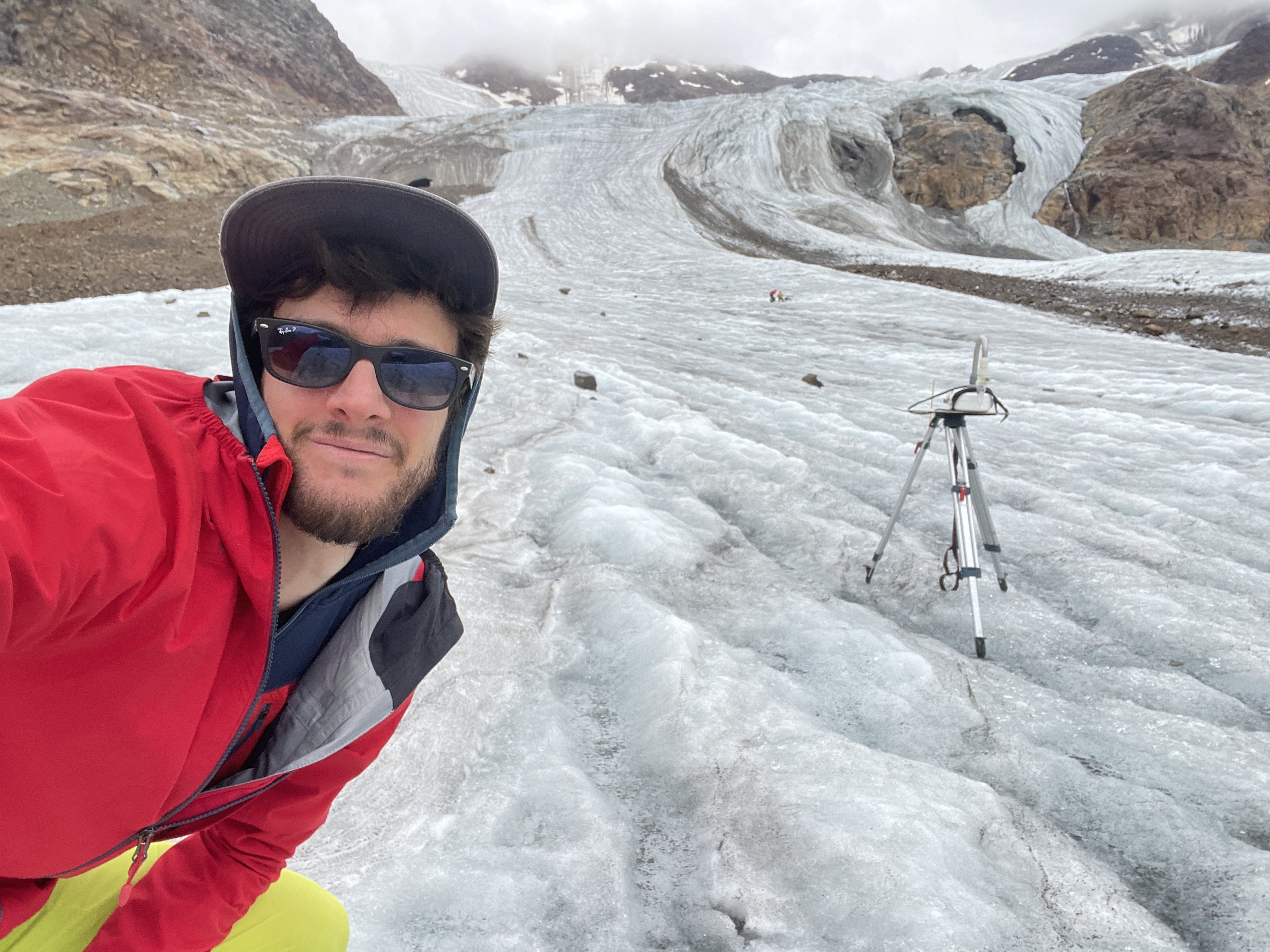
DC1 Alessandro Cuzzeri: April 2023 - September 2023
During the first month of my project, I conducted extensive literature research to lay the foundations for future work and gain the necessary insights to build a sound project outline in the coming months in the fields of aero-microbiology, ecology of cryospheric microbial communities, persistent organic pollutants and microplastic contamination of these environments. In month 2, I continued with literature research focused on new, sound and scientifically relevant methodologies for the analysis of microbial communities in air, ice and sediment matrices. ONT Nanopore Sequencing (3rd gen sequencing) was chosen as the sequencing platform and its existing applications in literature were investigated to confirm its suitability.
In month 3, June 2023, along with the now defined sequencing method, a project outline was drafted for years 1, 2 and 3. Fieldwork planned in the Arctic in year 2 will be supported by the methods and analyses already tested in an alpine setting during year 1 to maximize efficiency. At the same time, a suitable metagenomics bioinformatic pipeline will be investigated and tested. In month 4, I began sampling for an Italian glacier (Forni Glacier) and an Austrian remote glacier (Jamtalferner). Sampled matrices included air and cryoconite sediment for future amplicon analyses and metagenomics. By the end of the month, the metagenomics pipeline was tested successfully until the binning and bins refinement stages (further testing was prevented due to the low number of reads included for testing purposes, impeding the taxonomy assignment and gene annotation steps).
In month 5, (August 2023), sampling was conducted for an Italian glacier (Forni Glacier) together with my second supervisor and an Austrian remote glacier (Jamtalferner). We started testin a new bioinformatic pipeline for 16S-rRNA amplicon sequencing through the Nanopore platform. Cryoconite sediment sequencing data will be handled with this set of bioinformatic tools, which will also be employed for Arctic samples (year 2). In month 6: (September 2023) the Amplicon sequencing pipeline (“Emu”) was set up and running. Data from the Nanopore sequencing platform is scheduled to be further analysed during the latter part of the month, concomitant with a one-week Nanopore crash course organised in Verbania-Pallanza (Italy) Further, bio-statistics, multivariate analysis and clustering analysis wil be explored and compared to the existing methods used in literature, for implementation in papers produced as part of the ICEBIO framework.
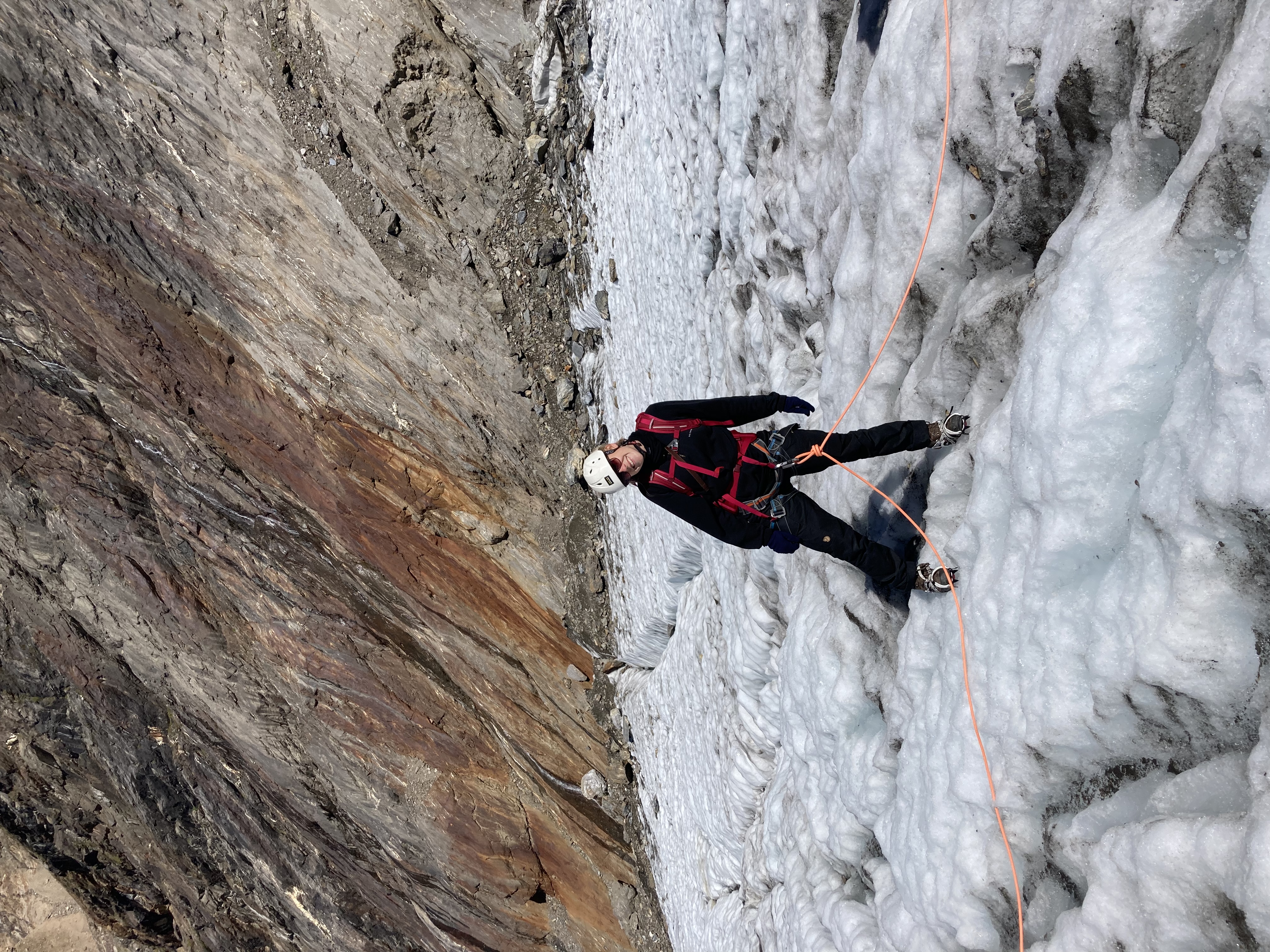
DC6 KLARA KOHLER: MAY 2023 - OCTOBER 2023
In the first month of my project, I familiarised myself with my topic - the subglacial environment, rock crushing and nutrients in glacial systems. I did a lot of literature research and wrote a literature review. At the Mechanochemistry Symposium I met fellow researchers working on similar topics or with similar methods.
In month two, I got an introduction to a nutrient analyser for low concentrations (nM range). I also started working on a lab plan for analysing the nutrient content of samples from the sub- and proglacial environment and searched for literature on the different methods.
In month 3 (July), I wrote up the methods for nutrient analysis that I will need for the analyses of my samples later, and helped to test a phosphate digestion method with the low-concentration analyser. In August, I continued to prepare my lab work, ordered chemicals and lab equipment for this and wrote up the risk assessments for the different methods.
In month 5, September 23, I attended the IceBio Kick Off Meeting in Innsbruck and Obergurgl, where we got the first training in field safety and sampling. At the end of the month, I participated in a PhD school on Ice Coring Techniques at the Copenhagen University. Finally, in month 6, we set up the new Gallery Nutrient Analyzer and I started testing the different methods of the different nutrients I want to analyse (N, P, Si, Fe). I have also participated in different committee meetings and workshops here in our department.
Attached photo courtesy of Catherine Larose
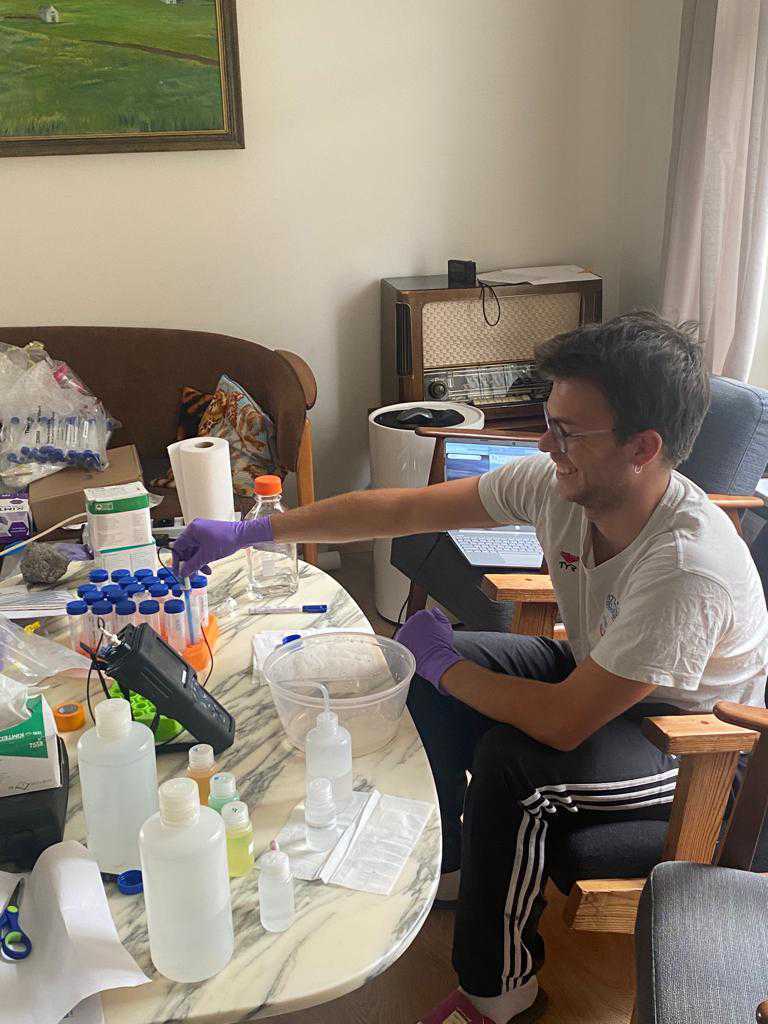
DC7 MARCO AJMAR: JUNE 2023 - DECEMBER 2023
During the 1st month of my project, I expanded my knowledge about my research topic through a detailed review of the scientific literature. I also started preparing samples for DOC analyses and I learned how to use a TOC analyser. During the 2nd month, I continued reading as much literature as possible and wrote a literature review. I also helped to analyse DOC samples from Svalbard on the TOC analyser. At the beginning of August, I started planning, preparing and packing all the material needed for the upcoming fieldwork in Iceland.
In the period from mid August to mid September, I took part to a research fieldwork in Iceland for 10 days, where I learned how to take and process samples from glaciers and river transects. Right after that, I attended the 1st ICEBIO meeting in Austria, where I met all the research team and got an introduction on safety in fieldwork and sampling techniques.
During the 4th month, I attended a one-week PhD summer school on ice cores analyses techniques at (ICAT) Copenhagen University. I also started to familiarize with ion chromatography (both cations and anions instruments) at the GFZ, sorted out the samples gathered during the summer fieldwork by my research team (Iceland, Greenland and Norway) and organized a lab plan to analyse them. In addition to that I expanded the methods section of my literature review.
During the 5th month, I ran some tests to determine the limit of detection of the ion chromatographs and I analysed samples from Iceland. I also used a test kit to measure alkalinity of my liquid samples. At the beginning of November, I went to Aarhus University to retrieve some samples and right after that I went to the University of Leeds for a short visit. There I was introduced to ICP-MS analyses and analysed all the water samples from summer fieldwork.
During the 6th month, I went to Aarhus University for a short secondment. There I learned how to use a nutrient analyser for nM phosphate concentrations and a Gallery Nutrient Analyser. I analyse samples from both Iceland and Norway on both instruments. Back at the GFZ, I looked into the data gathered at Aarhus University and started developing a research plan involving the equipment from Clear Water Sensors. In addition to that, I started the procedure to enrol at the Freie Universitat of Berlin.
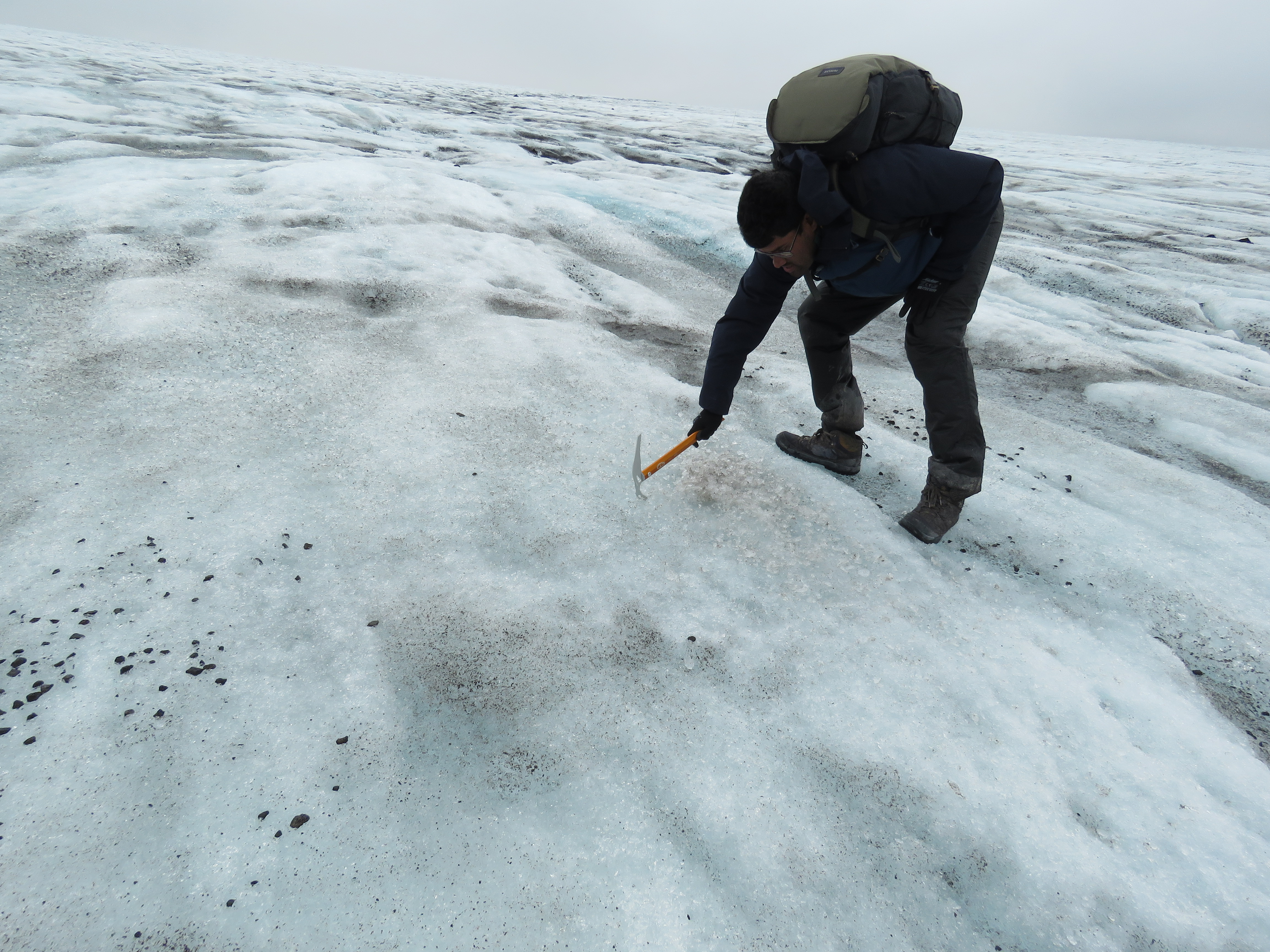
DC5 ANIRBAN MAJUMDER: JULY 2023 - DECEMBER 2023
I joined the lab on 15 July 2023 and in the first month I started the preparation for Iceland fieldwork and began reading research articles for my literature review. In Month 2 (August): I finished the fieldwork plan for Iceland and went for 10 days of fieldwork. I collected samples in Iceland and got my first fieldwork experience.
At the beginning of September 2023 (month 3), I attended the first IceBio network event in Innsbruck and got fieldwork safety and crevasse training on the Alps glaciers of Austria. After that, I started my PhD registration procedure at the FU Berlin.
I Month 4 (October): I started working on a research manuscript and analysed metabolomics data from the Greenland samples collected previously by my other team members.
In November, the work with the research article continued; I did statistical analyses of various metabolites, plotted data and discussed them with co-authors; and simultaneously continued with my literature review.
I also did a public outreach in which I performed DNA extractions with school kids and explained to them why this is
important.
In Month 6 (December): I started DNA, RNA and metabolites extraction from many field samples from Greenland, Svalbard, Norway and Iceland; these samples will be part ofmy PhD and were in part collected by others.
.
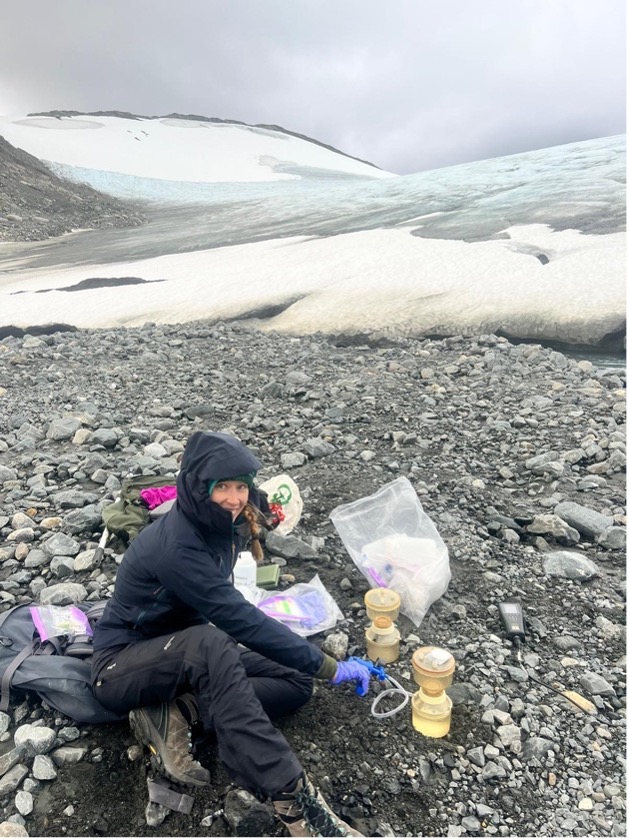
DC8 SILJE WAALER: August 2023 - January 2024
During my first month (August 2023) I started having meetings with my supervisors to establish the possibilities of the project. Related to that I also started on my literature review and started to formulate ideas for the project description. During this month I also had my first experience with glacial fieldwork at Sulitjelma/Salajekna (10 days total).
Month 2: During the second month I continued the literature review and project description. Moreover, I joined the Kick-off meeting w. ICEBIO in Innsbruck and meet the other PhDs and PIs. During this month I also participated in a riffle and polar bear safety course provided by Norwegian Polar Institute and went on a one-day field day with my mentor Postdoc. Sarah Tingey to the proglacial river of Steindalsbreen.
In Month 3 (October) Postdoc. Sarah Tingey and I went to Svartisen and sampled at the proglacial river (7 days total). In late October I started preparing for my first pilot of an experiment with glacial flour.
Month 4: During the fourth month the team of ECRs related to the ICOM-lab (now Polar Magic Lab) got training in automated nutrient analysers provided by SEAL Analytical on both a segmented flow analyser and a discrete analyser. Moreover, I started up the first half of my pilot on the experiment with glacial flour.
Month 5: During the fifth month I continued on the first half of my pilot on the experiment with glacial flour. I also visited CIIMAR in Porto, Portugal, to study a pipeline for assessing the abundance of target genes related to microbial mercury methylation.
In January 2024 (month 6), planning for the coming field season in Svalbard intensified, with meetings at different levels. During this month I also started the second half of the pilot experiment and attended and presented during lab-tours at the launch of the new Centre of Excellence, Centre for ice, Cryosphere, Carbon and Climate (iC3) at the Department of Geosciences, UiT.
Attached photo courtesy of Sarah Tingey
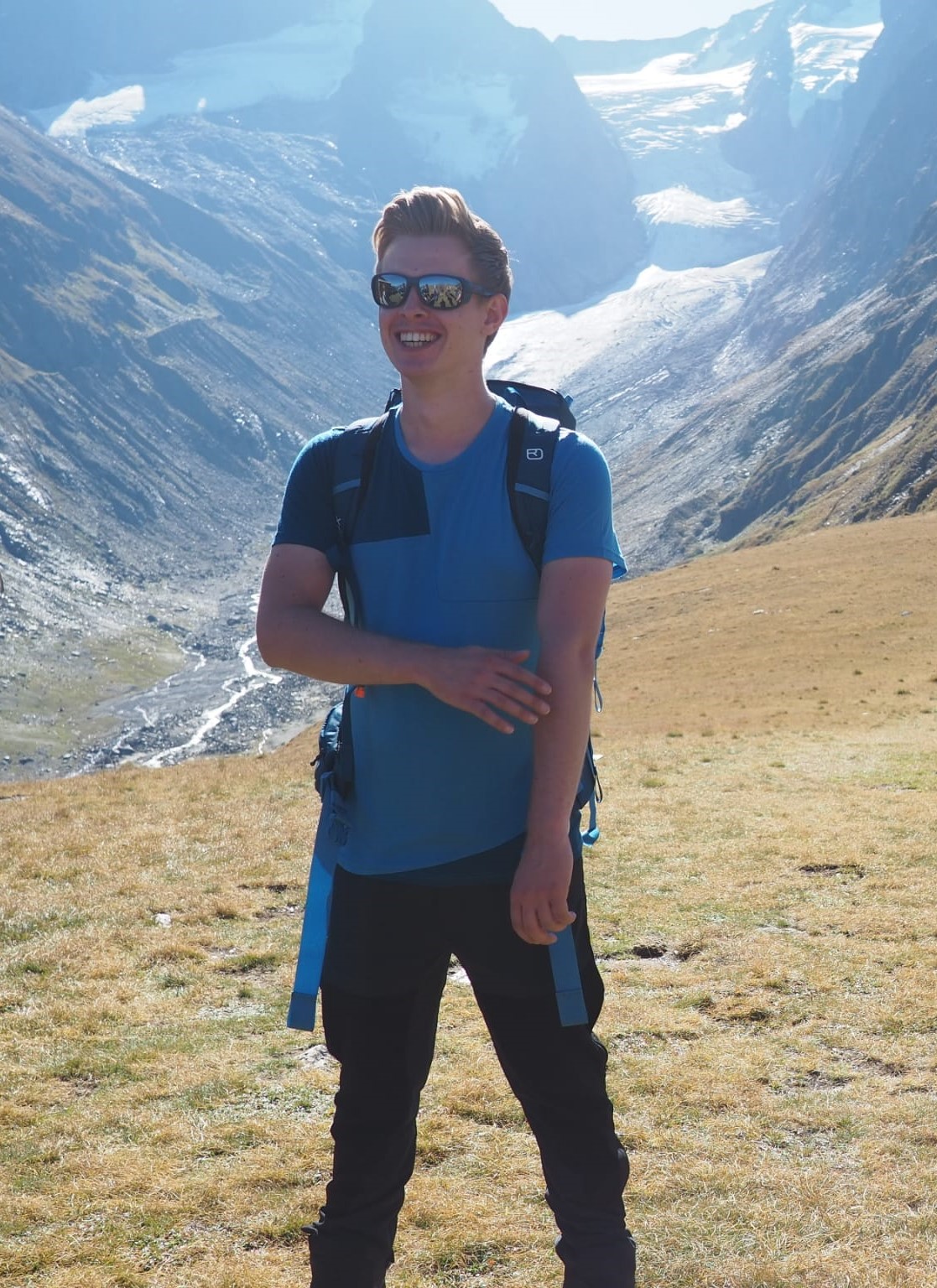
DC4 LARS VAN DIJK: August 2023 - January 2024
I started my PhD project (August 2023) by a 2-day field trip to Greenland to collect fresh cryoconite samples from the Greenland ice sheet and immediately utilized these samples to gain insight into the cultivable fraction of microorganisms by cultivation in different conditions on culture plates. Parallel to this, I familiarized myself with the project by doing literature research, started writing my PhD plan, and settled into my new living and working environment.
The second month into my PhD, the cultivation experiments and the literature research continued. I finalized my PhD plan and participated in the first ICEBIO network event (in Austria) where I got introduced to the other ICEBIO DCs and PIs.
The ongoing tasks persisted into the third month (October).
A month later, I went to the DMS (Danish Microbiological Society) conference in Copenhagen where I met some inspiring researchers and research projects that sparked novel ideas for my project. In the laboratory, the cultivation experiments came to an end, and I could start processing my cultivated samples for DNA amplicon sequencing to see what microorganisms we were able to grow. Additionally, a multitude of microbial colonies were selected and isolated to obtain pure bacterial cultures for future analyses.
In the fifth month, I performed some bioinformatical analyses on data that was generated during the cultivation experiments. In addition to this, I analysed other microbiological, physical, and chemical data from the Greenland ice sheet that was either generated at the Department of Environmental Science at Aarhus University or publicly available to expand my knowledge on the Greenland ice sheet.
At the end of the fifth month and the beginning of the sixth month, I started to process my cultivated samples for DNA sequencing. I extracted the DNA in all my samples, amplified the 16S rRNA gene by PCR (Polymerase Chain Reaction), and prepared the samples further for sequencing. At the end of the month, I went to a week-long annual science meeting from another project that AU is affiliated with, Deep Purple, that is also researching the biological, physical, and (geo)chemical processes of the Greenland ice sheet. In this meeting, we discussed their research findings and the fieldwork trip to the Greenland ice sheet that Deep Purple is organizing in July/ August 2024, which some ICEBIO DCs may also join.
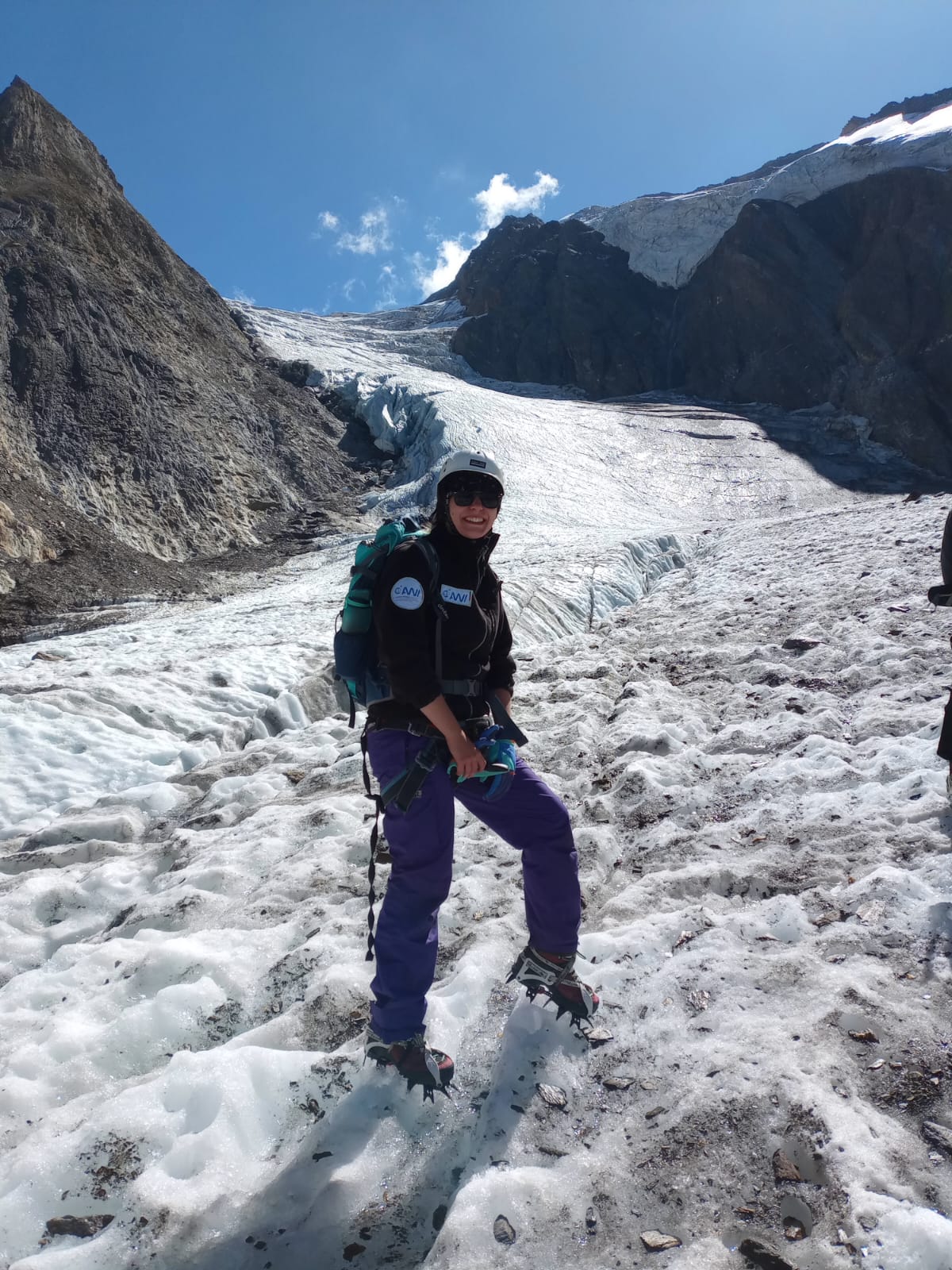
DC3 ANNIKA MORISCH: August 2023 - January 2024
During my first month, August 2023, I delved into project planning and initial experiments. I began by reviewing our frozen sample inventory and delving into metabolomics and glacial research to shape my research hypothesis. Meetings with my supervisors were instrumental in outlining the project's possibilities.
Month 2: I intensified my literature research and explored potential project ideas and collaboration partners, both within and outside the ICEBIO project. This phase involved reaching out to experts in the field to discuss potential collaborations and gather insights for refining the project direction. Additionally, I was happy to go to the first ICEBIO network event in Austria, where I got introduced to the other amazing ICEBIO DCs and PIs, fostering connections that will be invaluable throughout this PhD and beyond.
Month3: Enrolling in a programming course to enhance my skills in data handling was just the beginning of preparing for the exciting journey ahead. As I commenced detailing my study design, my focus shifted to reviewing and refining intracellular metabolite extraction methods tailored for a study on surface microbial communities. Method development stood as a critical step, ensuring the accuracy and reliability indispensable for our experimental procedures.
Months 4 and 5 (November and December 2023): Here, I continued focussing on refining last details on the experimental protocol and implementing quality control measures and measured my first test sample. I explored additional data processing strategies for the generated metabolomic data and participated in a Hands-on Data Analysis course for Metabolic Profiling. Nuclear magnetic resonance spectroscopy and Mass Spectrometry really threw me into the deep end of science, but hey, I'm swimming just fine!
Moving into the sixth month, I continue testing and tinkering in the laboratory and start planning fieldwork and experiments on the ice. These discussions aim to contribute to unravelling glacial carbon fluxes and fostering future collaborative research opportunities. Moreover, as the first glimpses of data begin to emerge, I immerse myself in their analysis. Antibiotics produced by glacial microbial communities have captured my full attention—what an incredibly thrilling prospect to explore them!
Looking ahead, fieldwork in Kangerlussuaq, Greenland, during the summer of 2024 will be a substantial milestone. Fieldwork will involve the incubation of surface ice samples with stable isotope bicarbonate to elucidate chemical communication strategies and drivers of spatial microbial bloom distribution. I will investigate microbial community composition and aim my efforts to compiling a robust metabolic dataset. I am excited about subsequent experiments during winter/early Spring of 2025, which will help me unveil the mystery of metabolic processes during the Arctic winter.
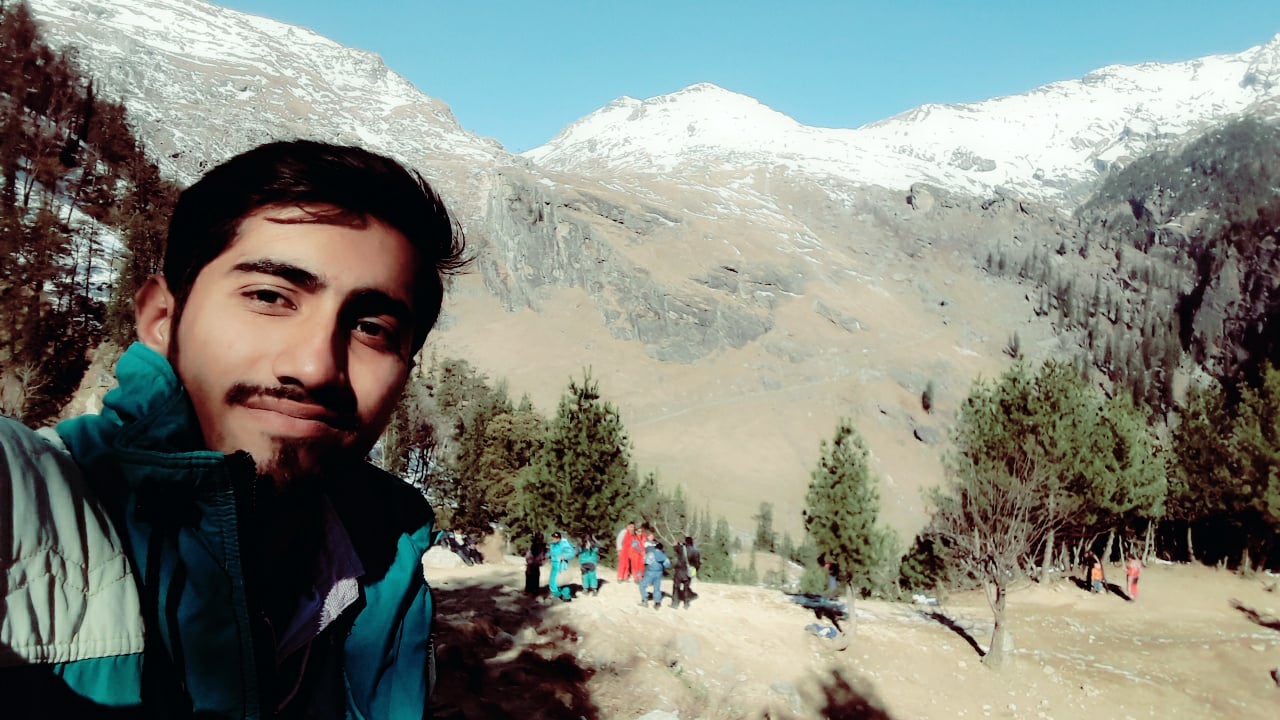
DC2 HARPREET SINGH: SEPTEMBER 2023 - FEBRUARY 2024
Month 1 (September 2023): The 1st month involved administrative work and validating the visa and registrations. Soon we had a group meeting to get familiar with the people involved in the project and to develop a communication network. It also involved basic explanations about everyone’s work background and their fields of interest.
Months 2-4 were spent conducting a literature survey which will be a continuous process to stay updated with the current microbial ecological advances and their environmental impact. The study is to develop an understanding about the formation of snow packs and glaciers and the formation of different ecological niche which thereafter will help me in elucidating the colonization, survival and functional activity of microbes.
Additional information and ideas are necessary to meet and fulfil the research gaps and for this I have been attending seminars related to microbial ecology and biodiversity. To improve my general competencies, I have taken a French course and classes on biostatistics and have been on field expeditions to get acquainted with good sampling practices.
In months 5 and 6, January-February 2024, optimization for DNA/RNA extraction was performed with snow filters to get high quality and quantity of DNA albeit having very low biomass. It was also necessary to remove the contaminants which hinder the sequencing and downstream analyses. Preparations for the efficient sequencing of samples were initiated.
The autoclave safety course was followed for certified usage of the autoclave and to understand the risks involved with pressurized compartments.
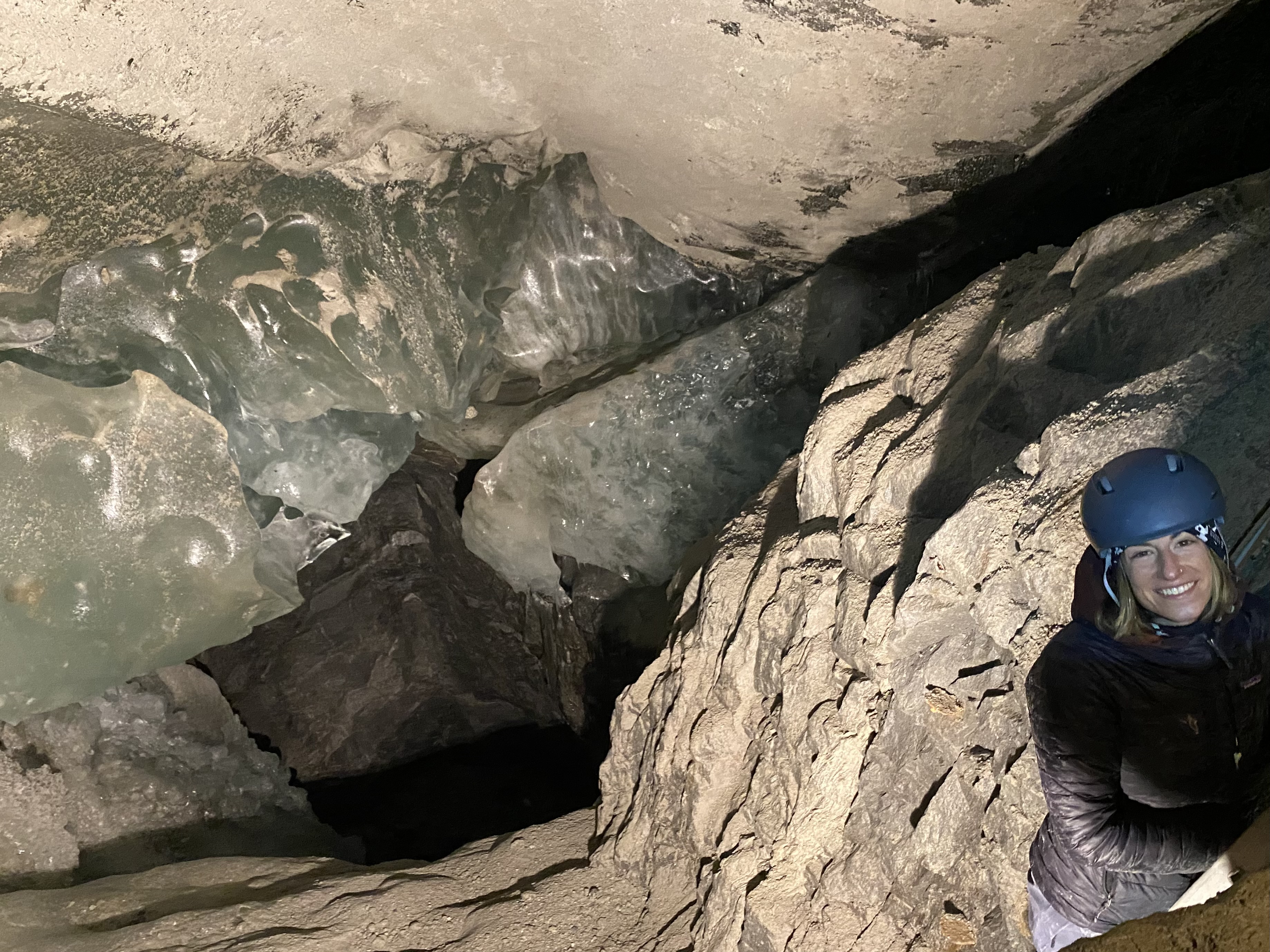
DC9 KARA SAMPSELL: SEPTEMBER 2023 - FEBRUARY 2024
Month 1 (September 2023): TIn the first month, I attended the IceBio network training event in Austria. I met the network team and dove into the recommended literature. Upon returning to Grenoble, I met our lab members and began identifying potential field sampling locations.
Month two entailed field sampling in Chamonix to collect glacial flour to be used in my research. During this month, I also continued to work on literature review and gather ideas for analyses and experiments.
November was my third month in the program. We contacted the managers of a hydroelectric dam site receiving water from glaciers around Chamonix to perform future sampling. I also attended a week-long Autumn school on Biodiversity. I began to form plans for future plant experiments and met with a collaborator in Lyon to discuss our ideas and timeline.
Our lab planned to begin DNA/RNA extractions and sequencing in January following the completion of lab renovations and acquisition of essential equipment and materials in the 4th month. I performed water content and laser particle size analyses of my glacial flour samples. I concluded my first French course.
Following the holidays and renovations, I attended a short workshop on fluorescence microscopy. I then began extracting DNA/RNA from the glacial flour samples. I worked on identifying extraction and PCR conditions that would be successful for my samples, utilizing gel electrophoresis and 16S PCR amplification to assess the results. I attended a two-day Inovalo360 Winter School focused on innovation, entrepreneurship, and valorisation in science.
We returned to Chamonix to collect subglacial samples at one of our sampling sites and planned further collaboration with the hydroelectric dam manager. I continued with courses in French and “Biodiversity and the Law”. Month six closed with the second IceBio network meeting in Grenoble in February of 2024.
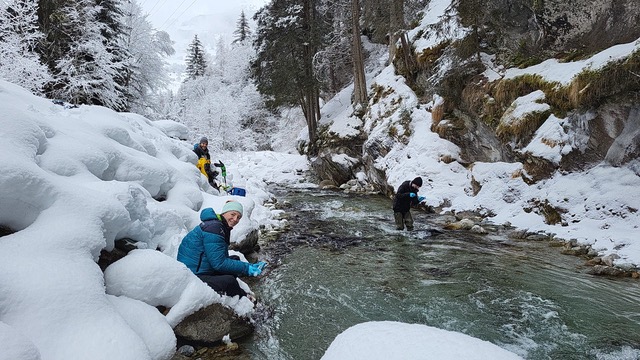
DC12 LEA FRANCOMME: NOvember 2023 - APRIL 2024
Month 1 (November 2023):
The first month of my PhD consisted mainly in reading publications to understand the state of the art about Hydrurus foetidus, the algae I am working on as well as thinking about experiments I could conduct. I also got to assist other researchers on their fieldwork to get familiar with the different locations, the sampling protocols and so on.
Month 2:
December was dedicated to further reading and creating a project about the microbial community associated with Hydrurus foetidus for the master student I will have to supervised from January to June. I went in the nearby Swiss Alps to perform the first fieldwork of my project. It consisted in collecting some Hydrurus and initiate the cultivation experiment in the laboratory. Together with Klara, we gave a talk during the APECS Antarctica Day 2023 to present IceBio and its research area, the glacial biome as well as each DCs focus within it.
Month 3:
In January, I welcomed Nora, the master student who worked with me on my first chapter: The microbial community associated with Hydrurus. I introduced her to the project and together, we started sampling Hydrurus in the local Swiss Alps valleys. Regarding the cultivation experiment, I started a new liquid culture batch with different growth conditions as well as initiating the plate cultivation.
Month 4:
At the beginning of February, I started a bigger experiment to cultivate Hydrurus to test which part of the algae regenerates the best. When I was about to throw away the plates on which I experimented agar cultivation of Hydrurus after 2 months of incubation, I realised some green algal colonies had appeared, so I decided to keep them for further sequencing to check whether it was Hydrurus or another organism growing. Nora and I pursued and finished the sampling campaign in the Swiss Alps.
Month 5:
In March, the best growth conditions experiment to cultivate Hydrurus was stopped and after further brainstorming, I decided to stop trying to cultivate the algae (work that will be taken over by someone else of my lab) and based my PhD work on chapters and experiments that don’t require cultivation. Indeed, establishing the culture is very time consuming and fastidious. I initiated the second chapter of my PhD by collecting Hydrurus samples in the local streams to determine its full genome.
Month 6:
To conclude this half a year of PhD, I worked further on the second chapter of my thesis while Nora initiated the data analysis of the samples we harvested in January and February. Those data will be complemented with samples from the large-scale campaign over Switzerland I am organizing for May.
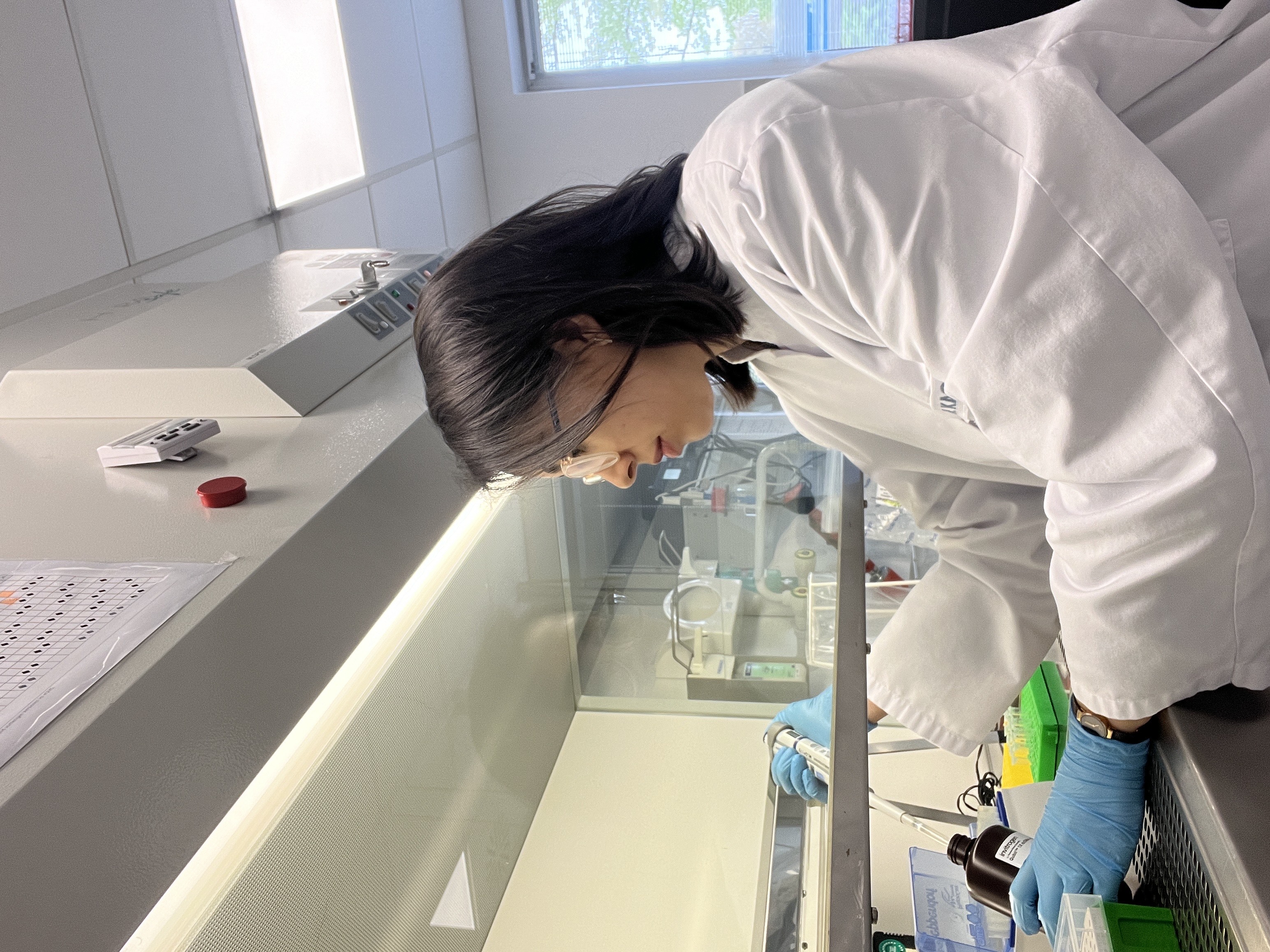
DC10 NASIM KASHIRI: NOvember 2023 - APRIL 2024
Month I: I arrived at Brill Company to begin my PhD program on November 1st, 2023. I met everyone in the lab and settled to my new living and working environment. Meanwhile, I initiated the PhD registration process at Paracelsus Medical University and participated in their online study week. This week provided a comprehensive introduction to doctoral research through various courses, encompassing topics such as the Philosophy of Science and Research Ethics and Diversity. The study week also included related assignments, which I successfully completed within the first month.
Month 2: The second month was dedicated to literature research. I sought to solidify my understanding of glacial environments and the microbial communities inhabiting Arctic and Antarctic regions, with a particular focus on pathogenic microorganisms. I gathered a collection of ideas, summarized them, and started writing a description of my PhD project.
Month 3: During the third month, I continued my literature review while undertaking a one-week internship at Nürnberg Klinikum. This internship provided the valuable opportunity to meet with my academic supervisor in person. I received training in various laboratory techniques including the operation of novel diagnostic systems such as MALDI-TOF, VITEK and Cobas. Additionally, I discussed potential project experiments with my supervisor, leading to a collaborative revision of the PhD plan. When I got back to Bremen after a week, I started working in the lab receiving comprehensive training in molecular laboratory techniques. I then dedicated time preparing the workspace, ordering the necessary kits and equipment required for the next month.
Month 4: In February, I commenced work with pure cultures obtained from a previous Arctic research project focusing on the acquisition of techniques for evaluating the hemolytic potential of bacterial isolates. Following this, I conducted the molecular identification of these isolates. In parallel, I familiarized myself with the recommended literature in preparation for the ICEBIO Grenoble network event, As I had missed the Kick-off meeting, this event in the last week of February provided the first opportunity to meet the entire ICEBIO team in person. Discussions during the event centered on various topics related to omics and data handling techniques, offering valuable insights into the statistical analysis aspects of the PhD project, Furthermore, I collected snow samples from the mountains surrounding Grenoble and initiated research using these samples upon my return.
Month 5: In the fifth month, I initiated cultivation experiments in the laboratory using the collected fresh snow samples. These experiments aimed to isolate cultivable microorganisms. Individual microbial colonies were selected and isolated to obtain pure cultures for subsequent analyses. I then cultivated these isolates under varying growth conditions to determine their temperature and nutrient preferences. The potential pathogenicity of the isolates was assessed through evaluation of their hemolytic activity on blood agar plates. Concurrently, I began familiarization with metagnomic techniques which will be a major component of my PhD project and a focus of my upcoming secondment at Aarhus University.
Month 6: The sixth month saw my participation in the university's second virtual study week during the summer semester. This week provided valuable instruction in Scientific Writing, Communication, and Research Funding. Subsequently, I expanded my knowledge in data analysis by enrolling in an online course. Following this, I processed the cultured isolates for DNA sequencing. This process involved DNA extraction, amplification of the 16S rRNA gene using polymerase chain reaction (PCR), and preparation of the samples for Sanger sequencing.











